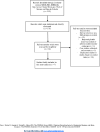Long-term cardiovascular outcomes of biodegradable polymer drug eluting stents in patients with diabetes versus non-diabetes mellitus: a meta-analysis
- PMID: 37644465
- PMCID: PMC10466760
- DOI: 10.1186/s12933-023-01962-w
Long-term cardiovascular outcomes of biodegradable polymer drug eluting stents in patients with diabetes versus non-diabetes mellitus: a meta-analysis
Abstract
Background: Today, diabetes mellitus (DM) has become a worldwide concern. DM is a major risk factor for the development of cardiovascular diseases (CVD). Eligible patients with CVD are treated invasively by percutaneous coronary intervention (PCI) whereby a stent is implanted inside the coronary vessel with the particular lesion to allow sufficient blood flow. Newer scientific research have shown that even though associated with a lower rate of re-stenosis, first-generation drug eluting stents (DES) were associated with a higher rate of late stent thrombosis. Recently, newer stents, namely biodegradable polymer DES (BP-DES) have been developed to overcome the safety issues of earlier generation DES. In this analysis we aimed to systematically compare the long term (≥ 12 months) adverse cardiovascular outcomes observed in DM versus non-DM patients who were implanted with BP-DES.
Methods: Cochrane central, MEDLINE (Subset PubMed), EMBASE, Web of Science, http://www.
Clinicaltrials: gov and Google scholar were searched for relevant publications involving BP-DES in patients with DM versus non-DM and their associated adverse cardiovascular outcomes. The mean follow-up time period ranged from 12 to 120 months. Data analysis was carried out with the latest version of the RevMan software (version 5.4). Based on the Mantel-Haenszel test, risk ratios (RR) with 95% confidence intervals (CI) were calculated and used to represent the results following analysis.
Results: Seven (7) studies with a total number of 10,246 participants were included in this analysis. Stents which were implanted during PCI were BP-DES. Participants were enrolled from the year 2006 to 2013. Our current results showed that in patients who were implanted with BP-DES, the risks of major adverse cardiac events (RR: 1.30, 95% CI: 1.18-1.43; P = 0.00001), myocardial infarction (RR: 1.48, 95% CI: 1.14-1.93; P = 0.003), all-cause mortality (RR: 1.70, 95% CI: 1.29-2.23; P = 0.0002), cardiac death (RR: 1.93, 95% CI: 1.28-2.93; P = 0.002), target vessel revascularization (RR: 1.35, 95% CI: 1.03-1.77; P = 0.03), target lesion revascularization (RR: 1.28, 95% CI: 1.07-1.54; P = 0.007) and target lesion failure (RR: 1.79, 95% CI: 1.52-2.12; P = 0.00001) were significantly higher in the DM group. Definite and probable stent thrombosis (RR: 1.80, 95% CI: 1.28-2.55; P = 0.0009) were also significantly higher in the DM group.
Conclusions: Diabetes mellitus was an independent risk factor associated with long term adverse cardiovascular outcomes following PCI with BP-DES.
Keywords: Biodegradable polymer drug eluting stents; Cardiovascular diseases; Diabetes mellitus; Durable polymer drug eluting stents; Percutaneous coronary intervention; Revascularization; Stent thrombosis.
© 2023. BioMed Central Ltd., part of Springer Nature.
Conflict of interest statement
The authors declare that they have no competing interests.
Figures








Similar articles
-
One-year outcomes of polymer-free amphilimus-eluting stents versus durable polymer zotarolimus-eluting stents in patients with diabetes mellitus: a meta-analysis.Cardiovasc Diabetol. 2022 Oct 28;21(1):220. doi: 10.1186/s12933-022-01673-8. Cardiovasc Diabetol. 2022. PMID: 36307791 Free PMC article.
-
Five-Year Outcomes in Patients With Diabetes Mellitus Treated With Biodegradable Polymer Sirolimus-Eluting Stents Versus Durable Polymer Everolimus-Eluting Stents.J Am Heart Assoc. 2019 Nov 19;8(22):e013607. doi: 10.1161/JAHA.119.013607. Epub 2019 Nov 7. J Am Heart Assoc. 2019. PMID: 31696762 Free PMC article. Clinical Trial.
-
Improved safety and reduction in stent thrombosis associated with biodegradable polymer-based biolimus-eluting stents versus durable polymer-based sirolimus-eluting stents in patients with coronary artery disease: final 5-year report of the LEADERS (Limus Eluted From A Durable Versus ERodable Stent Coating) randomized, noninferiority trial.JACC Cardiovasc Interv. 2013 Aug;6(8):777-89. doi: 10.1016/j.jcin.2013.04.011. JACC Cardiovasc Interv. 2013. PMID: 23968698 Clinical Trial.
-
Safety and efficacy of ultrathin strut biodegradable polymer sirolimus-eluting stent versus durable polymer drug-eluting stents: a meta-analysis of randomized trials.BMC Cardiovasc Disord. 2018 Aug 15;18(1):170. doi: 10.1186/s12872-018-0902-5. BMC Cardiovasc Disord. 2018. PMID: 30111289 Free PMC article. Review.
-
Stent thrombosis with biodegradable polymer drug-eluting stents versus durable polymer sirolimus-eluting stents: an update meta-analysis.Cardiology. 2015;130(2):96-105. doi: 10.1159/000368073. Epub 2015 Jan 16. Cardiology. 2015. PMID: 25612523 Review.
Cited by
-
Identification of novel target genes in exaggerated cardiac remodeling following myocardial infarction in diabetes.Front Endocrinol (Lausanne). 2025 Mar 14;16:1536639. doi: 10.3389/fendo.2025.1536639. eCollection 2025. Front Endocrinol (Lausanne). 2025. PMID: 40162308 Free PMC article.
-
Long-term outcomes of biodegradable versus 2nd generation durable polymer drug-eluting stents in PCI: Protocol for a systematic review and meta-analysis.PLoS One. 2025 Mar 19;20(3):e0319946. doi: 10.1371/journal.pone.0319946. eCollection 2025. PLoS One. 2025. PMID: 40106519 Free PMC article.
-
Ticagrelor monotherapy after a short course of dual antiplatelet therapy with ticagrelor plus aspirin following percutaneous coronary intervention in patients with versus without diabetes mellitus: a meta-analysis of randomized trials.BMC Cardiovasc Disord. 2024 Mar 19;24(1):166. doi: 10.1186/s12872-024-03836-9. BMC Cardiovasc Disord. 2024. PMID: 38504170 Free PMC article.
-
Percutaneous Coronary Interventions with Sirolimus-Eluting Alex Plus Stents in Patients with or without Diabetes: 4-Year Results.J Cardiovasc Dev Dis. 2024 May 22;11(6):160. doi: 10.3390/jcdd11060160. J Cardiovasc Dev Dis. 2024. PMID: 38921660 Free PMC article.
References
Publication types
MeSH terms
LinkOut - more resources
Full Text Sources
Medical
Miscellaneous

